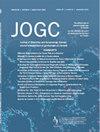在自发性早产风险增加的个体中,母亲BMI升高、宫颈长度和自发性早产之间的关系
IF 2.2
Q2 OBSTETRICS & GYNECOLOGY
引用次数: 0
摘要
目的:探讨具有SPTB危险因素(包括宫颈手术切除史或子宫异常史)的产妇BMI、宫颈短长(CL) < 2.50 cm与自发性早产(SPTB)的关系。方法:本回顾性队列研究纳入了无症状的单胎妊娠、胎膜完整、无SPTB病史但SPTB风险增加的孕妇(包括宫颈手术切除史或子宫异常史),在妊娠160至237周期间接受阴道超声检查CL,并有孕前BMI(或身高和体重)报告。主要暴露是孕前BMI,主要关注的结局是CL和SPTB。进行单因素和多因素logistic回归分析,评估BMI与CL、BMI与妊娠< 37周SPTB之间的关系,并对可能的混杂因素进行校正。结果:在纳入的407人中,198人(48.6%)的BMI为25.0。BMI > 25.0和CL < 2.50 cm与SPTB < 37周妊娠相关(aOR分别为2.65,95% CI 1.09 ~ 6.43, P = 0.031; aOR为7.30,95% CI 2.18 ~ 24.50, P = 0.001)。在单因素或多因素回归分析中,BMI bb0 25.0与CL < 2.50 cm无关(P分别= 0.29和P = 0.48)。结论:在宫颈手术切除史或子宫异常的个体中,BMI b> 25.0与妊娠< 37周的SPTB相关,但与妊娠中期CL < 2.50 cm无关。本文章由计算机程序翻译,如有差异,请以英文原文为准。
Association Between Elevated Maternal BMI, Cervical Length, and Spontaneous Preterm Birth in Persons at Increased Risk of Spontaneous Preterm Birth
Objectives
To evaluate the association between maternal BMI, short cervical length (CL) ≤2.50 cm, and spontaneous preterm birth (SPTB) in persons with risk factors for SPTB, including those with a history of excisional cervical procedures or uterine anomalies.
Methods
This retrospective cohort study included asymptomatic pregnant persons with singleton gestations and intact membranes, without a history of SPTB but at increased risk of SPTB (including those with a history of excisional cervical procedures or uterine anomalies), who underwent transvaginal ultrasound assessment of CL between 160 and 236 weeks gestation and had pre-pregnancy BMI (or height and weight) reported. The primary exposure was pre-pregnancy BMI, with the primary outcomes of interest being CL and SPTB. Univariate and multivariate logistic regression analyses were performed to assess the associations between BMI and CL and BMI and SPTB <37 weeks gestation, adjusting for possible confounders.
Results
Of the 407 persons included, 198 (48.6%) had a BMI ≥25.0. BMI ≥25.0 and CL ≤2.50 cm were associated with SPTB <37 weeks gestation (adjusted OR 2.65; 95% CI 1.09–6.43, P = 0.031 and adjusted OR 7.30; 95% CI 2.18–24.50, P = 0.001; respectively). BMI ≥25.0 was not associated with CL ≤2.50 cm in the univariate or multivariate regression analyses (P = 0.29 and P = 0.48, respectively).
Conclusions
In persons with a history of an excisional cervical procedure or uterine anomaly, BMI ≥25.0 is associated with SPTB <37 weeks gestation but is not associated with CL ≤2.50 cm in the second trimester.
求助全文
通过发布文献求助,成功后即可免费获取论文全文。
去求助
来源期刊

Journal of obstetrics and gynaecology Canada
OBSTETRICS & GYNECOLOGY-
CiteScore
3.30
自引率
5.60%
发文量
302
审稿时长
32 days
期刊介绍:
Journal of Obstetrics and Gynaecology Canada (JOGC) is Canada"s peer-reviewed journal of obstetrics, gynaecology, and women"s health. Each monthly issue contains original research articles, reviews, case reports, commentaries, and editorials on all aspects of reproductive health. JOGC is the original publication source of evidence-based clinical guidelines, committee opinions, and policy statements that derive from standing or ad hoc committees of the Society of Obstetricians and Gynaecologists of Canada. JOGC is included in the National Library of Medicine"s MEDLINE database, and abstracts from JOGC are accessible on PubMed.
 求助内容:
求助内容: 应助结果提醒方式:
应助结果提醒方式:


